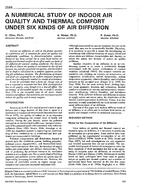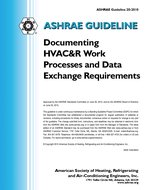Click here to purchase
Forced convection baking ovens are widely used in the baking industry for their high efficiency and effective heat transfer over radiation-based ovens. The aim of this study is to model and simulate an industrial baking oven as a prior step to optimize the operation of the oven (airflow management) and baking process, and reduce the required fuel consumption. This may help in compensating for the expected rising energy costs and meeting the mandatory industrial standards. A full scale three-dimensional model of an industrial oven is developed and analyzed using the ANSYS FLUENT computational fluid dynamics package that adopts a finite volume approach for the discretization of the governing conservation equations. The oven, which is composed of a heat exchanger, a fan, a baking chamber, and rotary racks, was first constructed using the SOLIDWORKS software and then imported to the design modeler in ANSYS. The computational domain was covered with a mesh of size 14 million elements. Initially, single phase simulations to predict the hydrodynamic and thermal fields were conducted for the sake of establishing an idea about the velocity and temperature distribution of the air circulating inside the oven. The results were validated with available experimental data. Temporal and spatial variations of the velocity field, recirculation zones, and temperature distribution will be presented and analyzed in terms of contour plots. Preliminary results indicate that some improvements in performance may be achieved by slightly modifying the design of the oven.
Citation: 3rd Intl Conf: Efficient Bldg Design
Product Details
- Published:
- 2018
- Number of Pages:
- 10
- Units of Measure:
- Dual
- File Size:
- 1 file , 1.3 MB
- Product Code(s):
- D-ICEB18-C020


